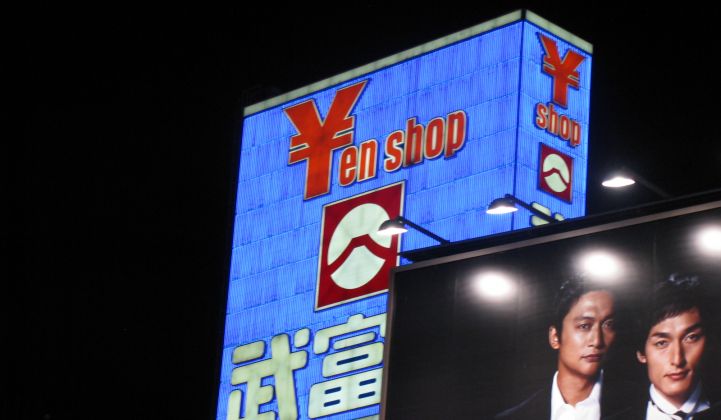Panasonic has invested $30 million into Tesla Motors, a move that will surely strengthen the ties between the two.
Panasonic became the supplier of lithium-ion battery cells to the automaker in late 2009. (The formal announcement came later.) The two companies are now cooperatively working on next-generation battery cells and packs for the Model S, Tesla CEO Elon Musk said last week in an interview with Greentech Media. Technological cooperation marked a new stage in the relationship.
Toyota also invested in Tesla. Toyota gets nickel metal hydride batteries for its hybrids from Panasonic. (Tesla and Panasonic will both speak at The Networked Grid on November 9 in San Francisco.)
In October, Panasonic president Fumio Ohtsubo laid out a plan to weave together the company's many divisions to become the largest company in the world when it comes to green electronics. The strategy had been in incubation for a few years.
By 2018, the company wants to obtain 30 percent, or 1 trillion yen ($12 billion) of its expected revenue from its energy systems business. Now, the group accounts for approximately 15 percent of the company's revenue. Panasonic also hopes to hit a carbon dioxide peak from its operations and from the way consumers use its products to peak in the same year. If it hits this mark, carbon emissions will be roughly level with 2010 emissions -- 120 million tons less than in a business-as-usual scenario.
The company bought 51 percent of Sanyo as part of the push and will likely acquire the rest of the company this year. Sanyo is a major maker of solar panels and batteries.
“We are trying to offer a whole solution,” Ohtsubo said in October. “We needed to produce a new line of business,” he said, adding that energy provides “a lower risk of commoditization.”



